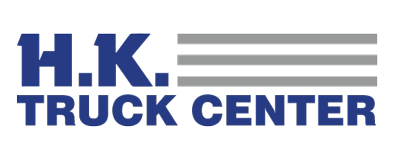
Will Disruption Get in the Way of Your 2022 Goals?
Last week, I posted an IdeaXchange blog that discussed how to set effective business goals. The goal of setting goals is not to post utopian or “pie in the sky” expectations, but to set goals that are achievable. In the blog I detail the following tips:
- Get buy-in from company leaders
- Set large goals but have incremental goals so people can see progress
- Don’t set too many goals…focus on ones that address company priorities
- Align goals with other business functions (work cross-functionally)
- Make sure to communicate with all stakeholders and those that will be impacted why are you setting these goals
- Be flexible in order to deal with the unforeseen
This last bullet point really came into focus this past weekend with Russia’s invasion of Ukraine. The world was just beginning to open up as the pandemic (though still with us) seemed to be coming under control. This invasion, besides its human cost, will only exacerbate things like shortages of raw materials and other commodities needed for business continuity.
The need for agility and flexibility
In a world where every action at a point on the globe can impact businesses thousands of miles away, businesses must focus on agility and flexibility when it comes to planning and achieving goals. An article last month in Forbes discussed how businesses can use flexibility to mitigate disruptions. That means not just agility to respond to challenges, but also the flexibility to adjust goals accordingly. Another Forbes article, posted in November of 2021 talked about setting effective new goals in a rapidly changing and disruptive world. Most comport with what I wrote about in my IdeaXchange blog.
Their first suggestion is to set a realistic goal, one that “is grounded in tangible, solid data.” They also suggest additional steps, including conducting a SWOT analysis at the start, identifying both strengths and weaknesses that could help or hinder achieving your goals. A company should also study past attempts that have failed to identify pitfalls that need to be avoided going forward.
But even with all of the above, “the best laid plans…” we all know the adage. Best-laid plans going awry seem to be the norm in today’s world and that intensifies the need to be able to not abandon goals but adjust how to accomplish them. That’s where the incremental goals I listed in my blog come in to play. One of the hardest things in achieving business goals (or personal goals for that matter) is in maintaining enthusiasm and engagement. By showing small wins (even if disruption may make the larger goals longer to attain), your workers will feel that they are moving forward.
Technology helps keep goals alive, even during disruptions
Technology has never played a more important role in achieving goals. Obviously, tech advancements streamline processes and can make operations more efficient, regardless of the situation. But it’s visibility that really makes a difference during disruptions. In today’s business environment, it is vital to have visibility because achieving goals means responding quickly to any challenges. That is the very essence of agility. As the Forbes article states, “This means having the visibility into events as they happen, anticipating disruptions before they happen, and moving from being reactive to responsive.”
The most important thing to remember is not to give up on your goals, but to be flexible enough to adapt how and when those goals are achieved.

About Jane Clark
Jane Clark is Vice President of Member Services for NationaLease. Before joining the full service truck leasing organization, she served in executive positions with some of the nation’s top staffing and recruitment agencies.




